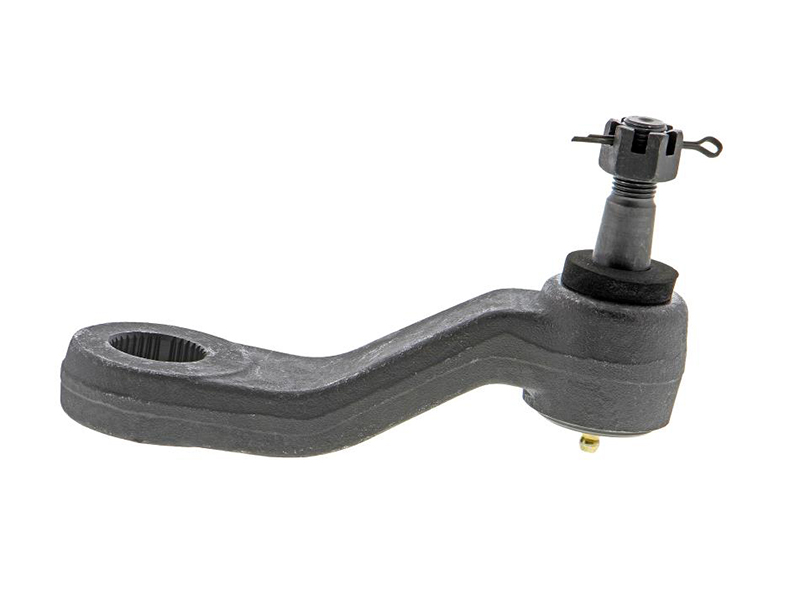Pitman arms are used on “box steering” or parallelogram steering systems that are usually found on trucks and rear wheel drive vehicles. They transmit the steering force from the gearbox to the steering system. The Pitman arm is on the driver’s side and connects to the center/drag link with a ball joint, to create a pivot point that allows the steering system to move freely. It is assisted by the idler arm that supports the other end of the steering linkage components.
The Pitman arm has a splined end that connects to the sector shaft on the steering box/gear. This provides a very secure connection for transmitting the torque from the steering gear to the steering linkage.
Some Pitman arm ball joints are sealed and do not require lubrication during their lifetime. Others may have a grease fitting that should be lubricated at every oil change.
PITMAN ARM LIFE
Pitman arms are durable components, and with the proper maintenance and care they could last the vehicle’s lifetime. However, depending on driving habits, road conditions, lack of lubrication and other factors, Pitman arms may become worn and/or damaged and will need replacing.
TYPICAL SIGNS OF A BAD/WORN PITMAN ARM
If the steering wheel feels loose, has extra play or seems difficult to control, or if the vehicle pulls to one side, these may be indications that the Pitman or idler arm is out of normal specification. Should these components completely fail, all steering control will be lost. These issues should be promptly inspected and dealt with as they present a major safety concern.
REPLACING A PITMAN ARM
The cost to replace a Pitman arm varies depending on the vehicle and required labor. Some vehicles require replacing both the Pitman arm and idler arm. Replacement parts may be relatively inexpensive, but the steering components do take some time to properly assemble and test. An alignment is also required when adjusting or replacing a Pitman arm.

